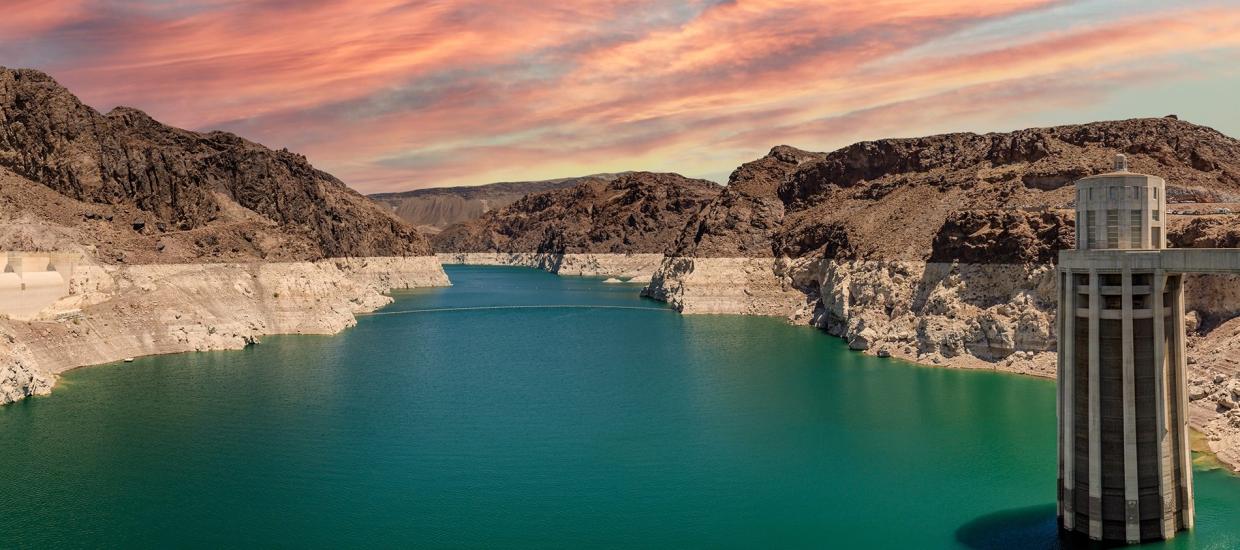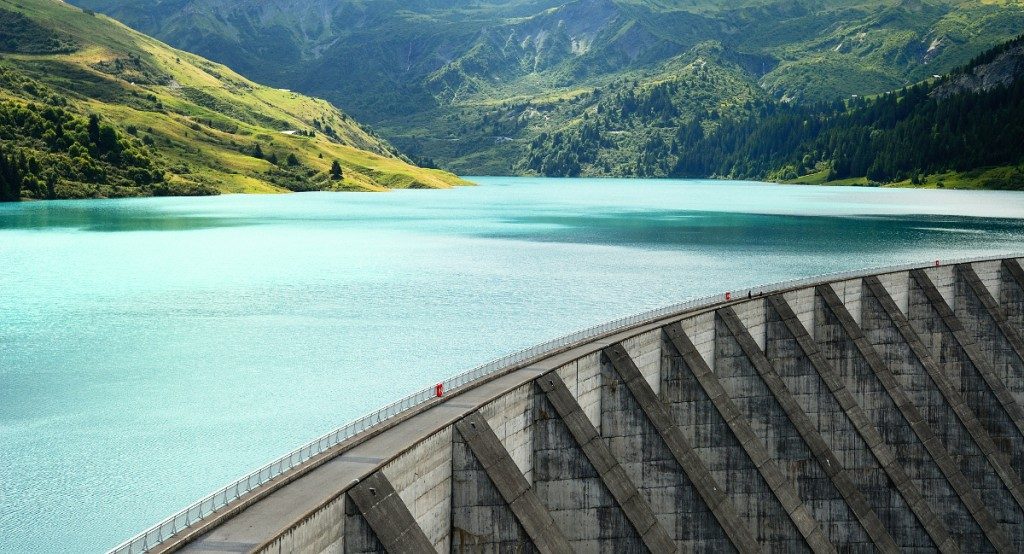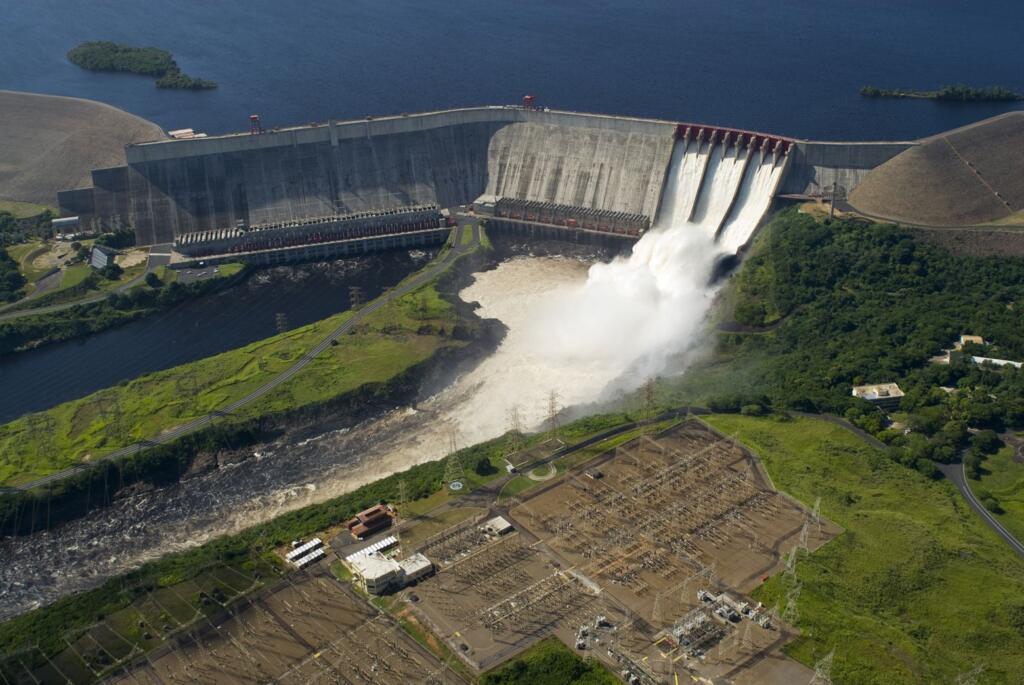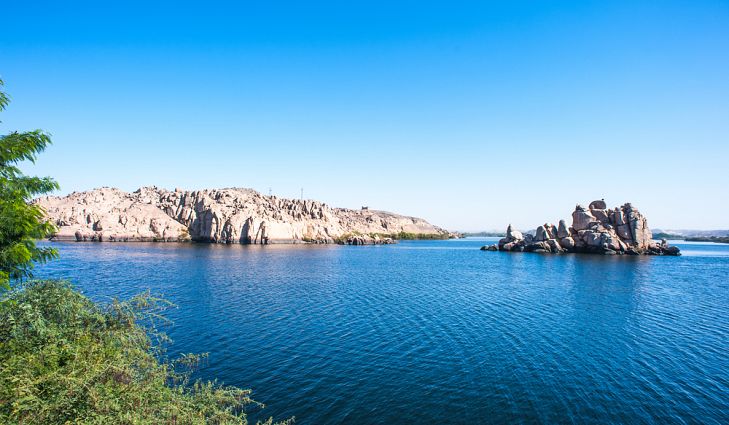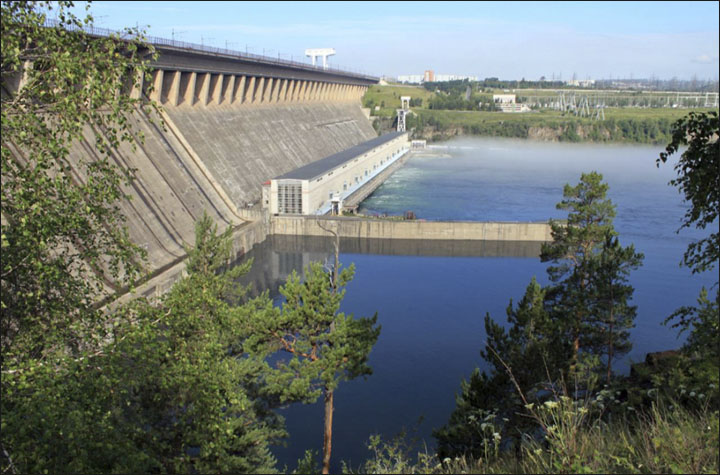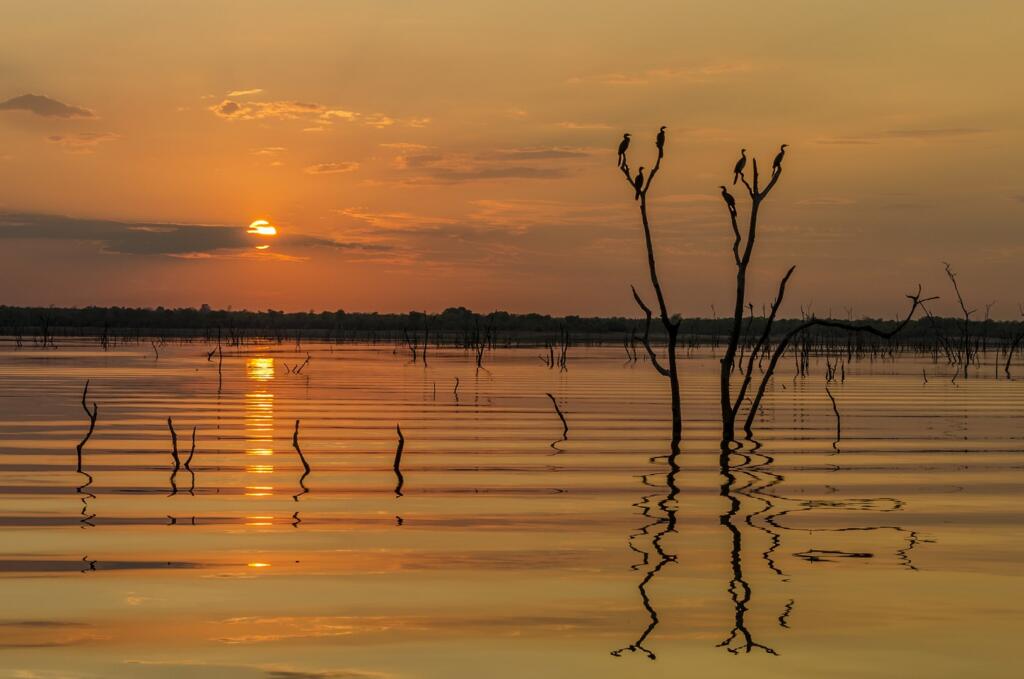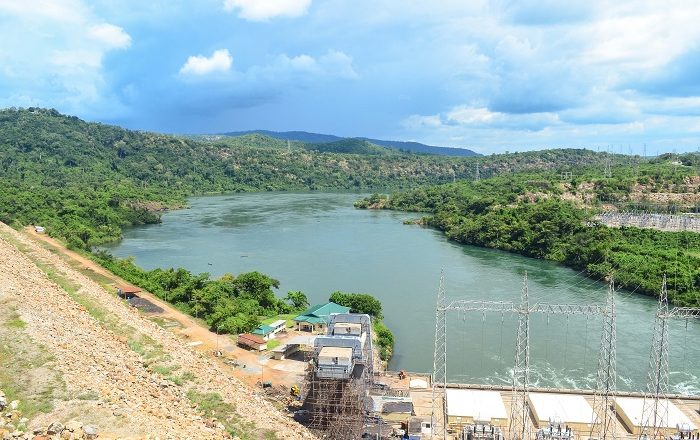Estimated reading time: 6 minutes
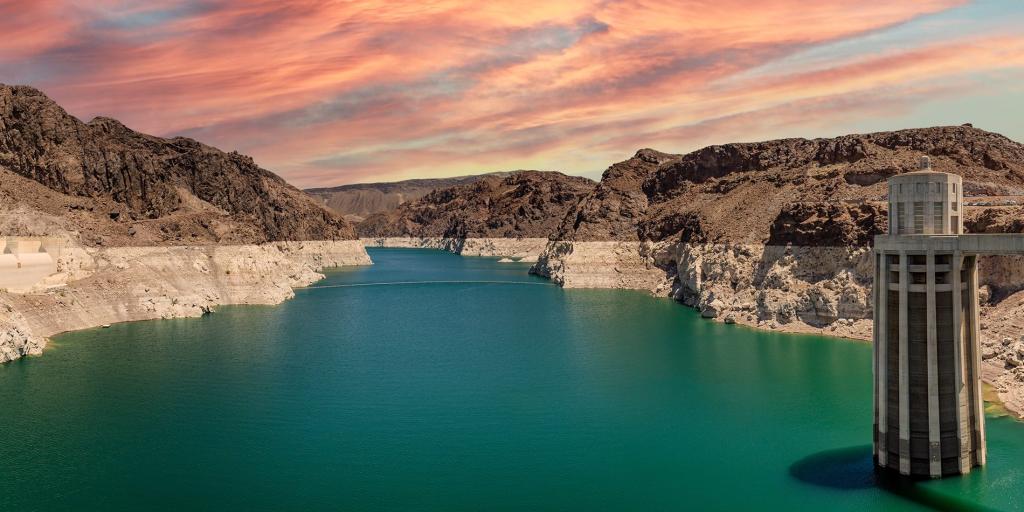
These are the top 5 largest man-made lakes in the United States:
The topic of man-made lakes is not new to Lake Homes Lifestyles. In fact, we’ve covered a couple of different angles on the subject, including The Evolution of Man-Made Lakes in America and The World’s Largest Man-Made Lakes. Continuing with the series, today we’ll uncover 5 of the largest man-made lakes in the United States.
Before we dive in, it’s important to mention that the following lakes are ranked by volume, not by surface area or shoreline. In addition, because lake water levels fluctuate, these rankings are determined when the lakes are at “full pool.” When not at full pool, our number-one and number-two-ranked lakes frequently alternate positions based on fluctuating water levels.
Are you ready to explore these man-made wonders?
Lake Mead, AZ/NV
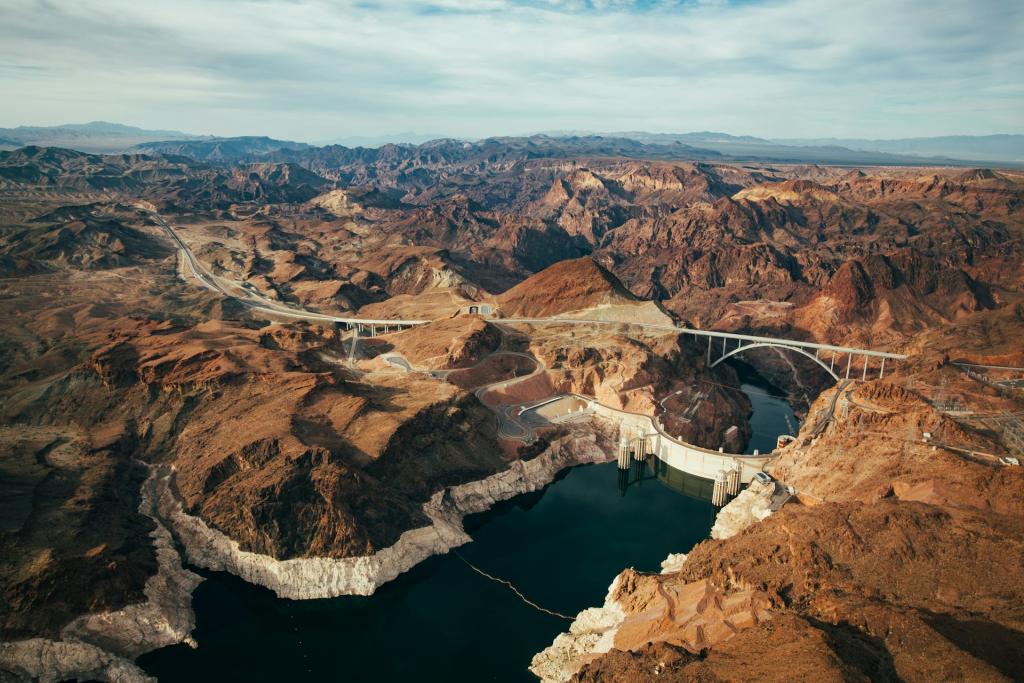
As you drive southeast of Las Vegas, you’ll find Lake Mead, located along the border of Nevada and Arizona. With an impressive water capacity of 28.76 million acre-feet at full pool, Lake Mead is the largest man-made lake in the U.S. However, due to increased usage and extended drought conditions, the lake has not reached its full capacity since 1983. Despite its decreasing water levels, Lake Mead continues to attract millions of visitors each year. Here are some interesting facts about Lake Mead:
- It was created by the Hoover Dam on the Colorado River.
- It supplies water to over 20 million people and farmland in the surrounding areas.
- Tunnels were built underneath the lake to help pump water into it.
- The city of St. Thomas, once submerged during the creation of the lake, can now be seen again due to the decreasing lake water levels.
Lake Powell, UT/AZ
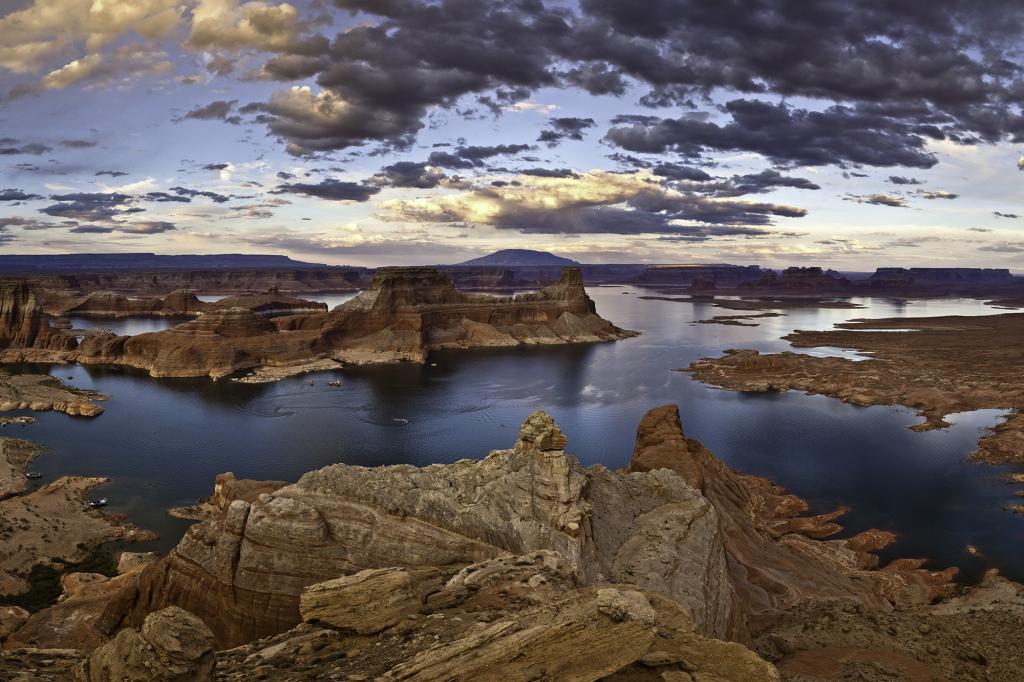
Situated northeast of Lake Mead on the Colorado River lies Lake Powell, the second-largest man-made lake in the U.S. with a maximum water capacity of 26 million acre-feet (MAF). Lake Powell began to fill in 1963, and it took over 16 years to finally reach the 3,700-foot level in 1980. Three years later, in 1983, the reservoir reached its all-time highest water level at 3,708.34 feet when the Colorado River experienced one of the heaviest floods in recorded history. During this time, the lake’s total water volume was 25.7 MAF. Similar to Lake Mead, Lake Powell has seen an annual decline in water level since due to increased water consumption and climate change. Here are other interesting facts about Lake Powell:
- It was created by the Glen Canyon Dam on the Colorado River.
- It attracts 3 million visitors each year.
- Glen Canyon, a natural canyon that is part of the immense canyon system carved by the Colorado River, was submerged by Lake Powell.
- Its shoreline measures longer than the entire west coast of the U.S. at nearly 2,000 miles long.
Lake Sakakawea, ND
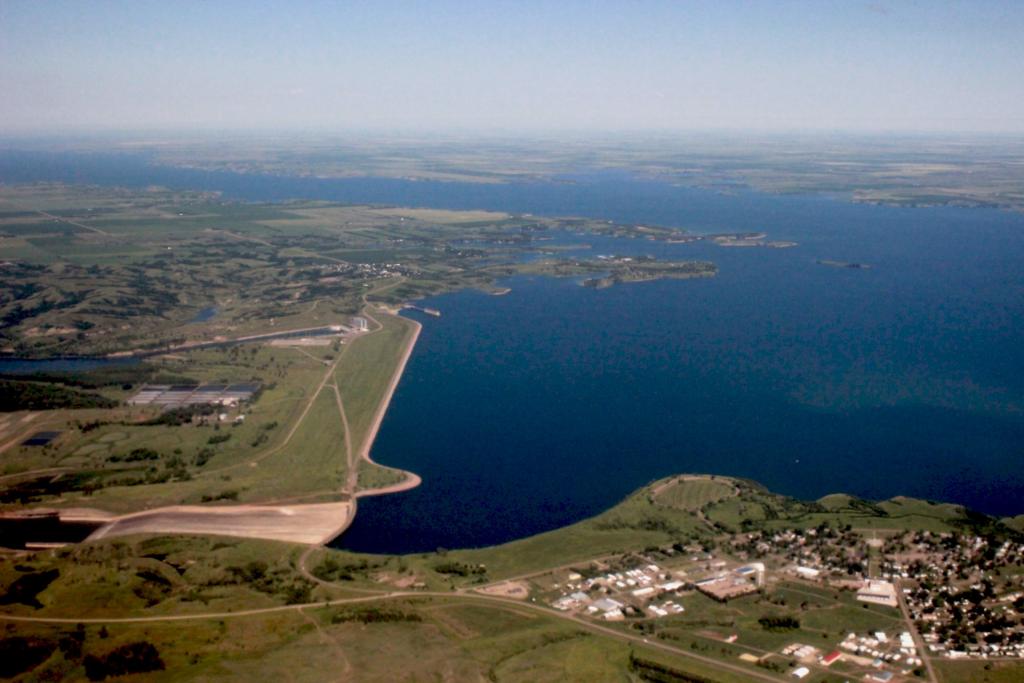
Nestled along the Missouri River in North Dakota is Lake Sakakawea. With a volume capacity of 23.8 MAF, this lake is the third-largest man-made reservoir in the U.S. and the country’s largest by surface area. The fluctuation in water levels remains consistent annually, reaching its peak in June before falling to its low point in December. Located approximately 50 miles northwest of the state’s capital, Bismarck, and with Lake Sakakawea State Park occupying 739 acres of its shore, this lake attracts thousands of visitors annually. Here are other interesting facts about Lake Sakakawea:
- It was formed after the construction of the Garrison Dam in 1953.
- The lake inundated thousands of acres of Indian Reservation, resulting in hundreds of Native American families being dislocated.
- The lake was named after Sacagawea, the Native American guide and interpreter during the Lewis and Clark expedition.
- Two ghost towns, Sanish and Van Hook, live beneath the lake’s surface.
Lake Oahe, SD/ND
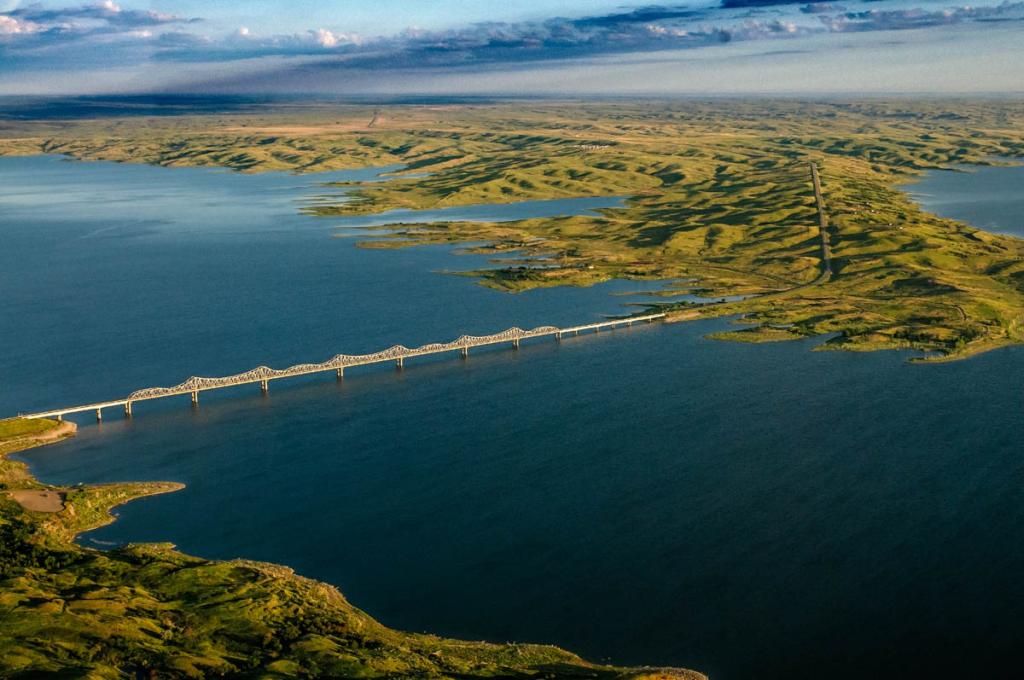
Located south of Lake Sakakawea along the Missouri River is Lake Oahe. A surface area of 3.12 million acres makes this lake the largest in the state of South Dakota and the fourth largest in the U.S. by volume (23.5 MAF). There have been controversial issues surrounding this lake, including the forced relocation of Native Americans during its construction and, most recently, the Dakota Access Pipeline project. However, Lake Oahe remains a popular destination, accommodating roughly 1.5 million visitors to its 50 public recreation areas each year. Here are some other interesting facts about Lake Oahe:
- Created by the Oahe Dam on the Missouri River.
- It was named for the Oahe Mission, which was established in 1874 by Reverend Thomas L. Riggs.
- A town called Forest City was submerged when the Oahe Dam was constructed and the Oahe Lake was formed.
- The lake also flooded over 200,000 acres of land on the Standing Rock Reservation and Cheyenne River Reservation, forcing Native Americans to relocate.
Fort Peck Lake, MT
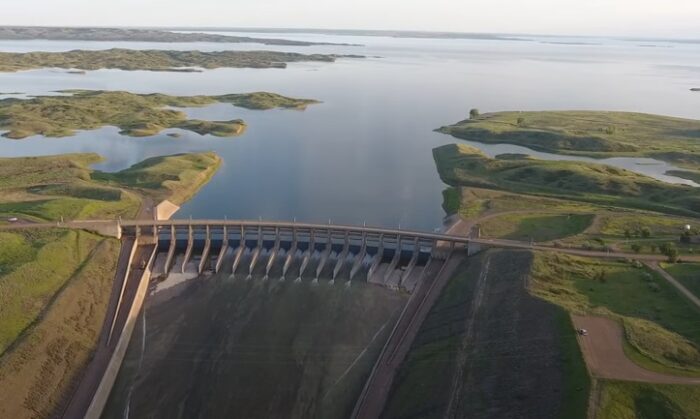
Fort Peck Lake, also known as Lake Fort Peck, is the largest man-made lake in Montana by surface area and is the fifth-largest man-made lake in the United States by volume (18.7 MAF). Impoundment of the lake began in 1937 and the reservoir was finally filled to capacity ten years later, in 1947. Twenty-seven recreation areas are located along its 1,520 miles of shoreline, making it a major tourist destination. Here are some other interesting facts about Fort Peck Lake:
- It was formed by the Fort Peck Dam on the Missouri River in response to flooding issues in the Missouri River Valley.
- The construction of the dam and reservoir brought in 10,500 men, leading to 18 boomtowns in the area.
- The second-largest National Wildlife Refuge, the Charles M. Russell National Wildlife Refuge, surrounds 1,719 miles of its shores.
- The lake area is known for its dinosaur excavation sites and is home to the Fort Peck Interpretive Center.
Despite their fascinating and controversial history, these impressive modern marvels are vital for water storage, hydroelectric power production, flood control, and recreation. Want to explore more lake trivia? Get your trivial pursuit game on with these articles!

